
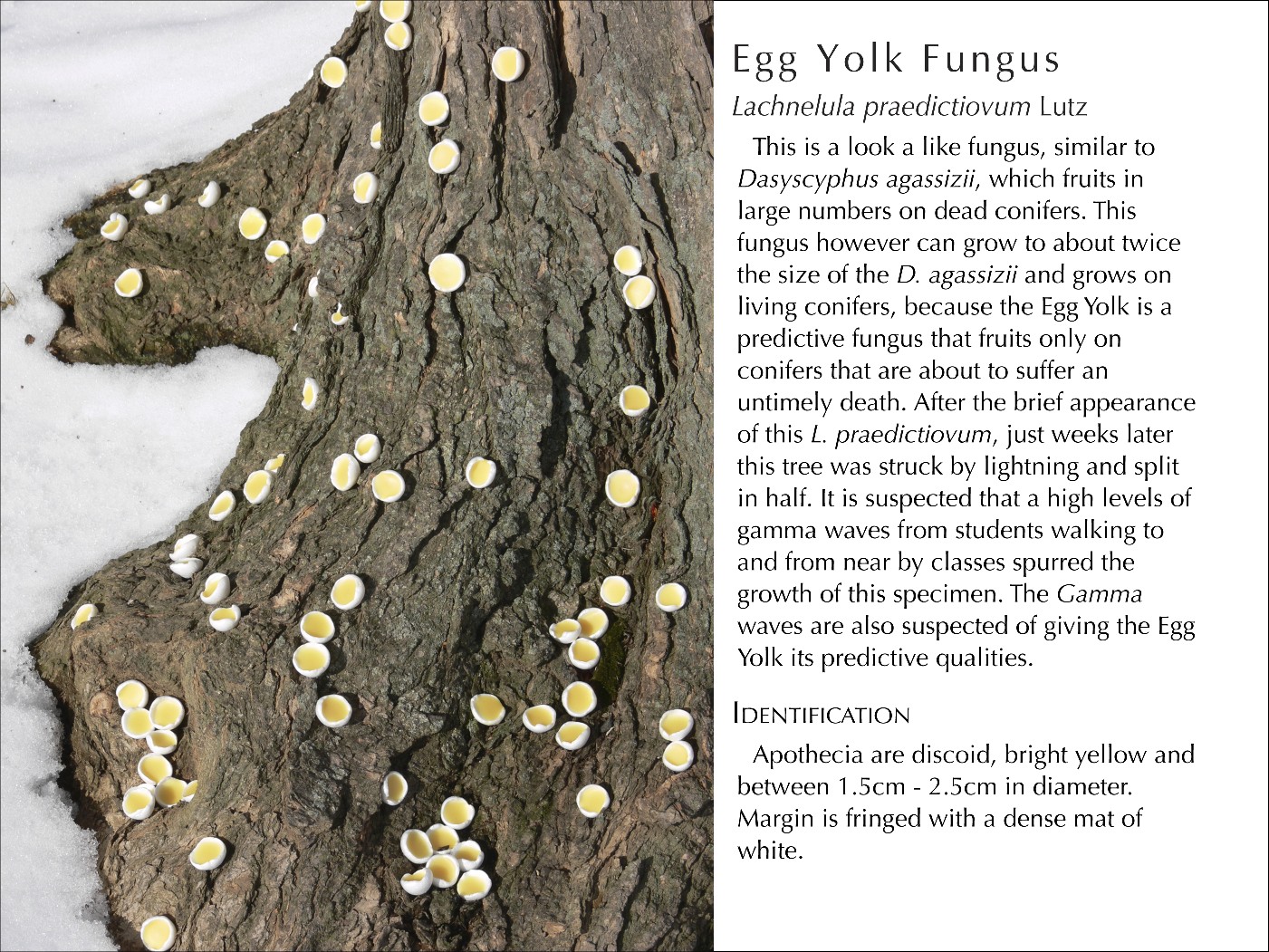

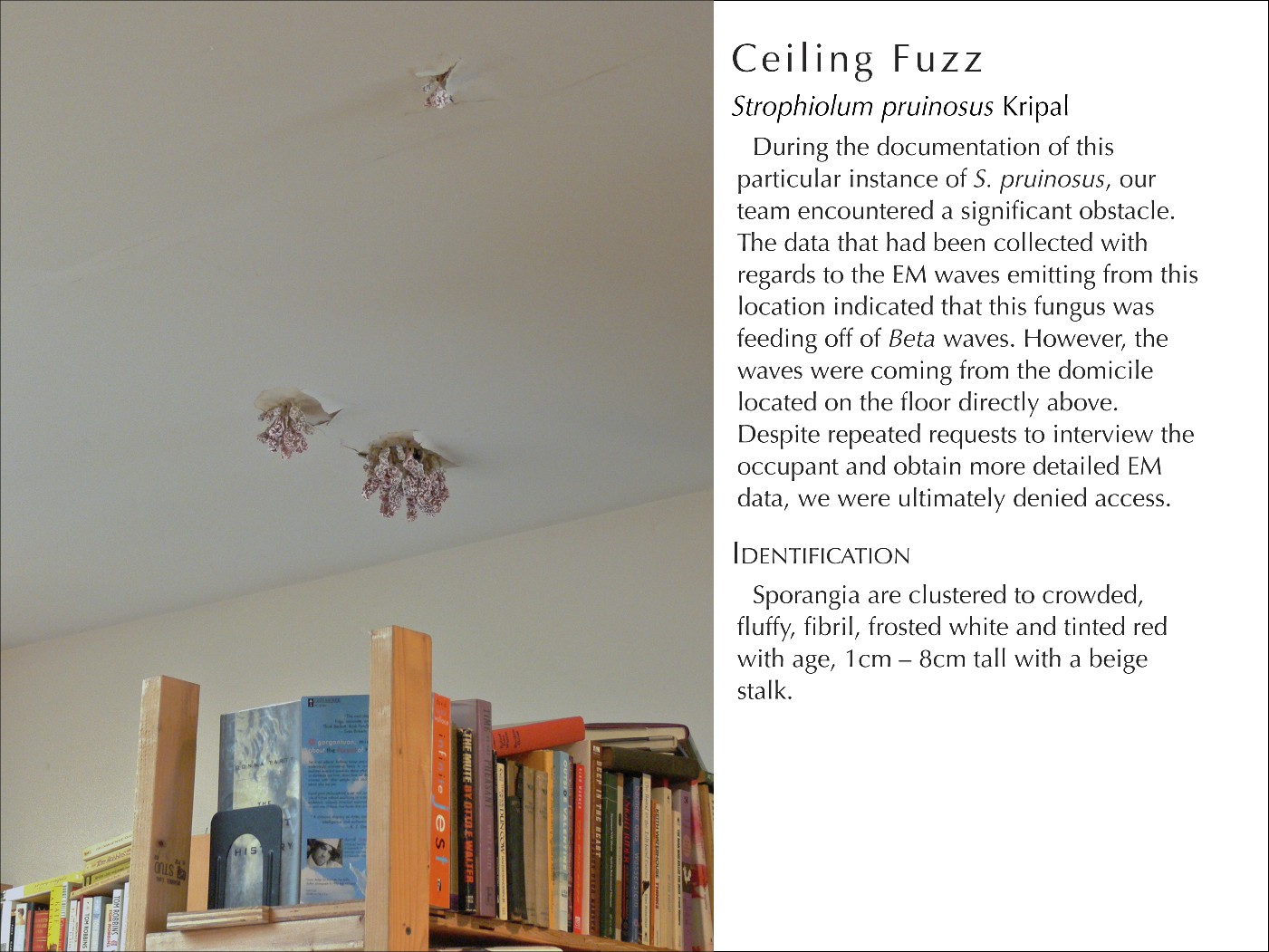

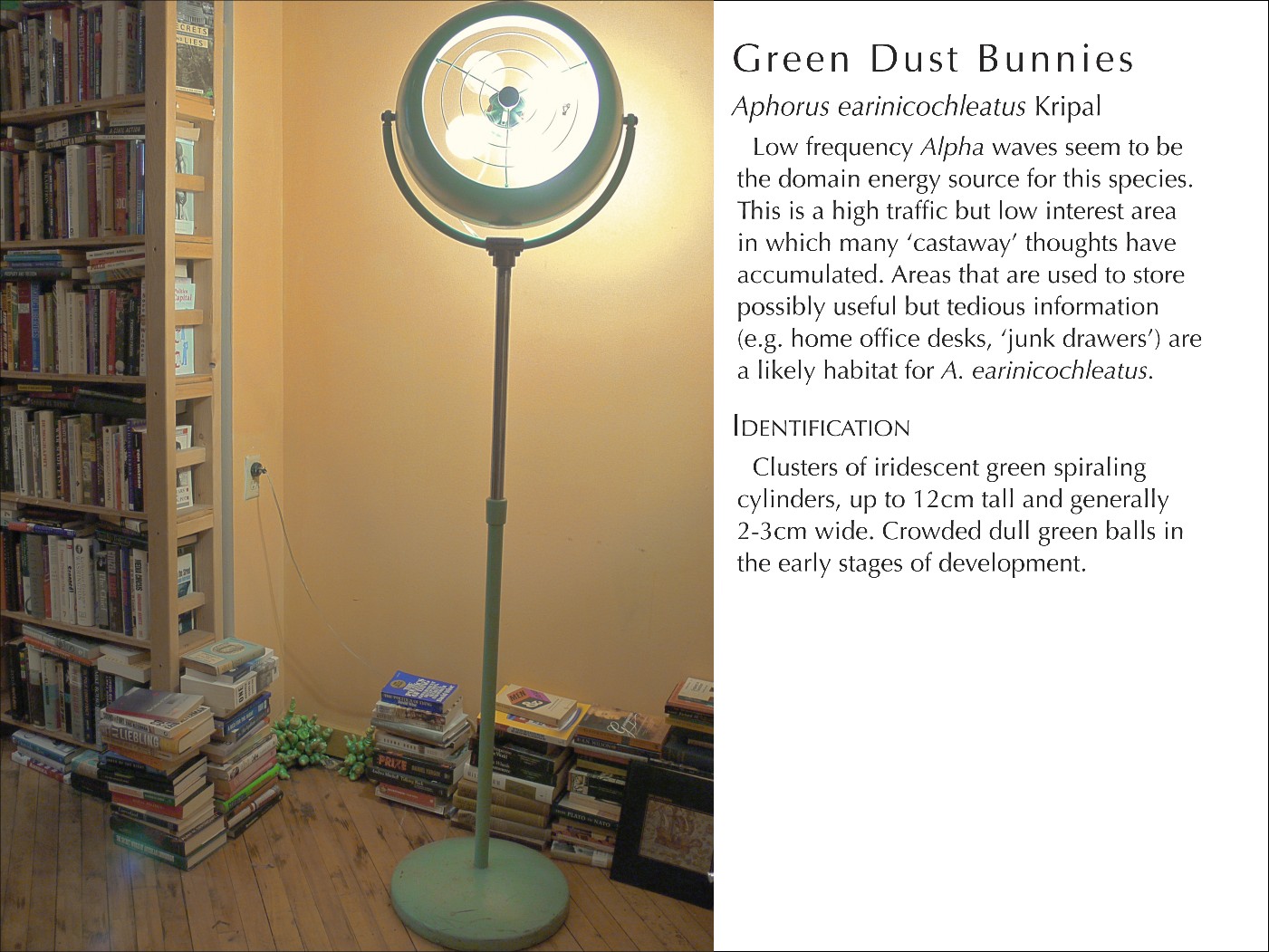
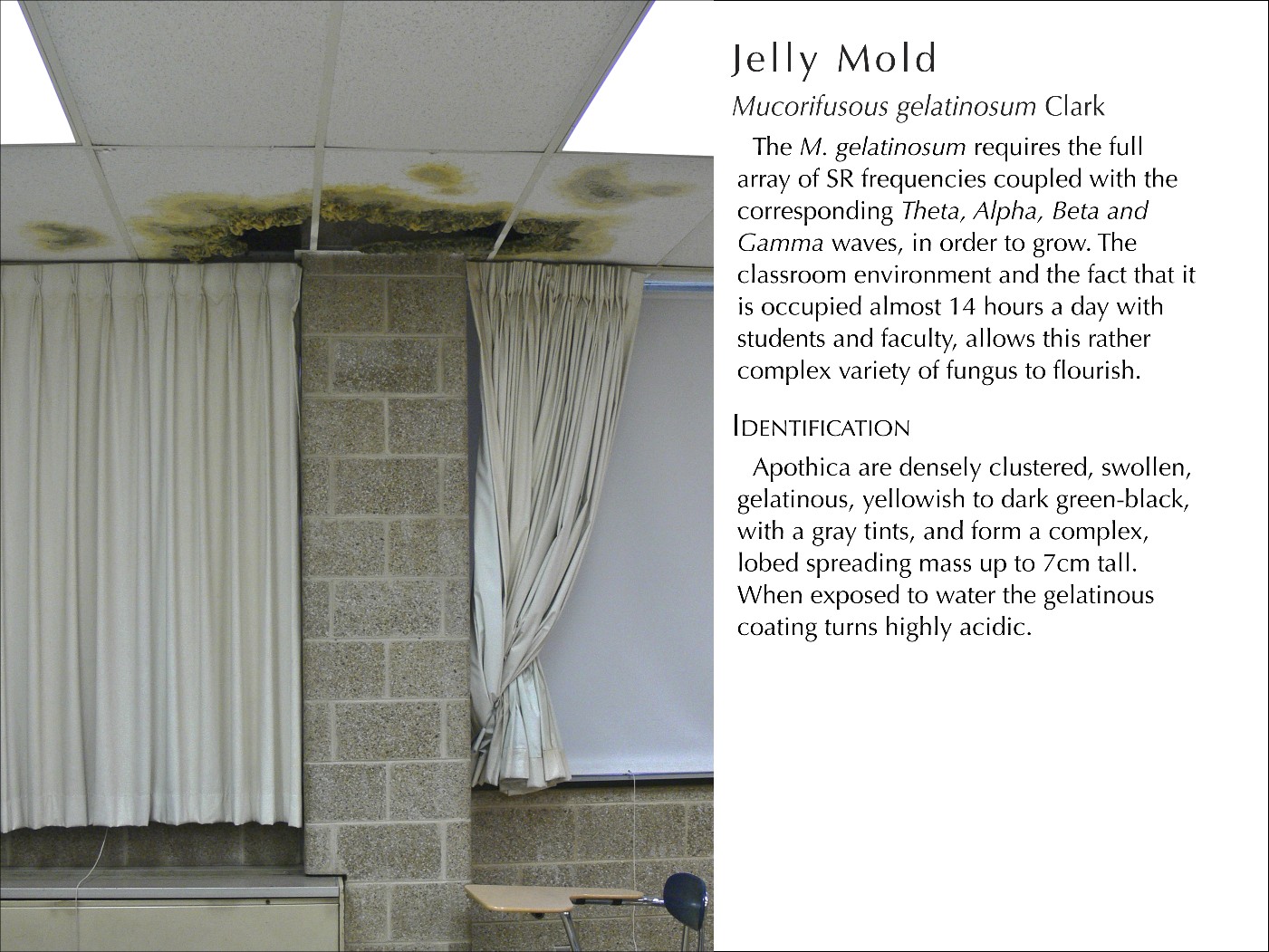
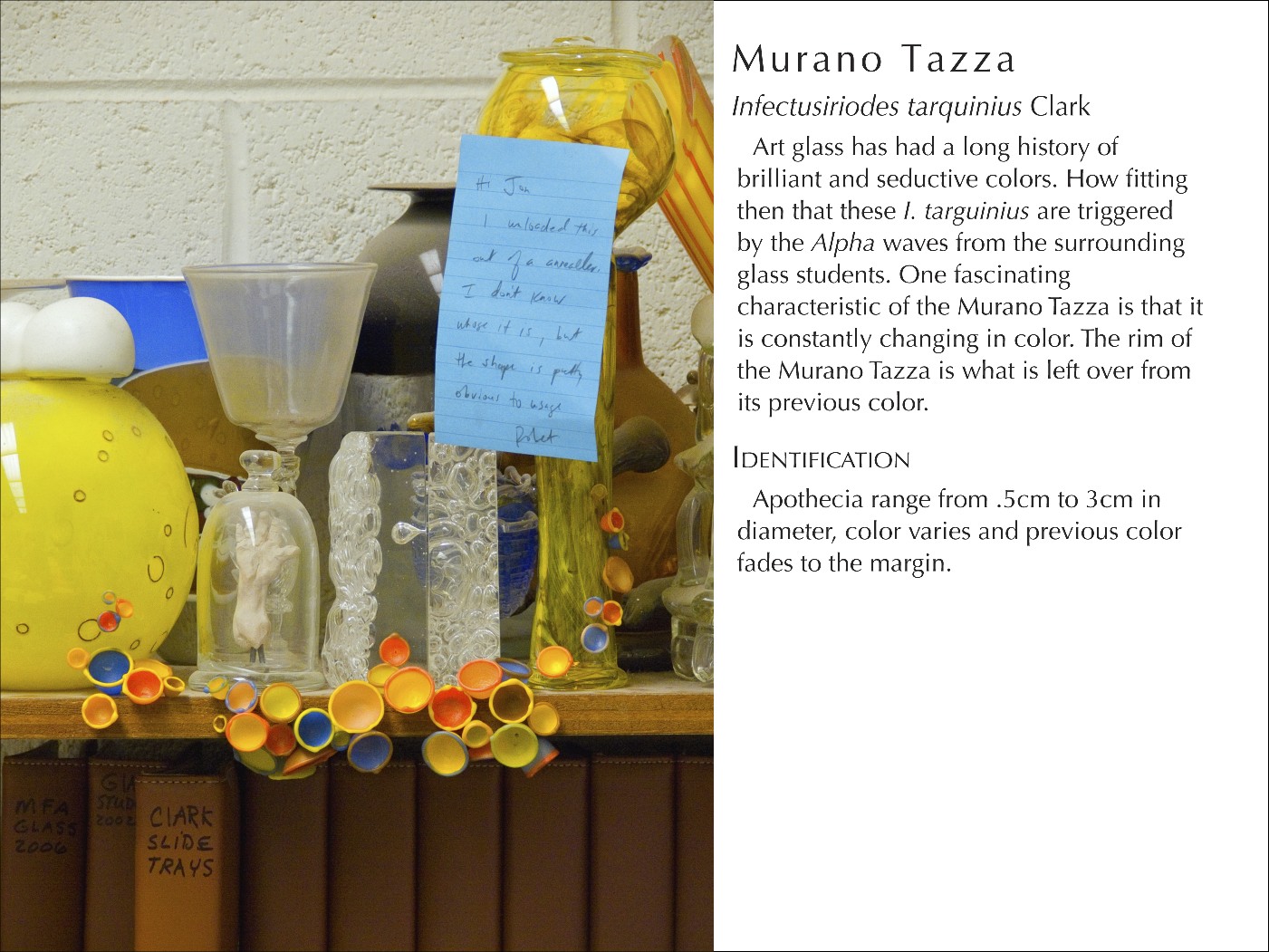
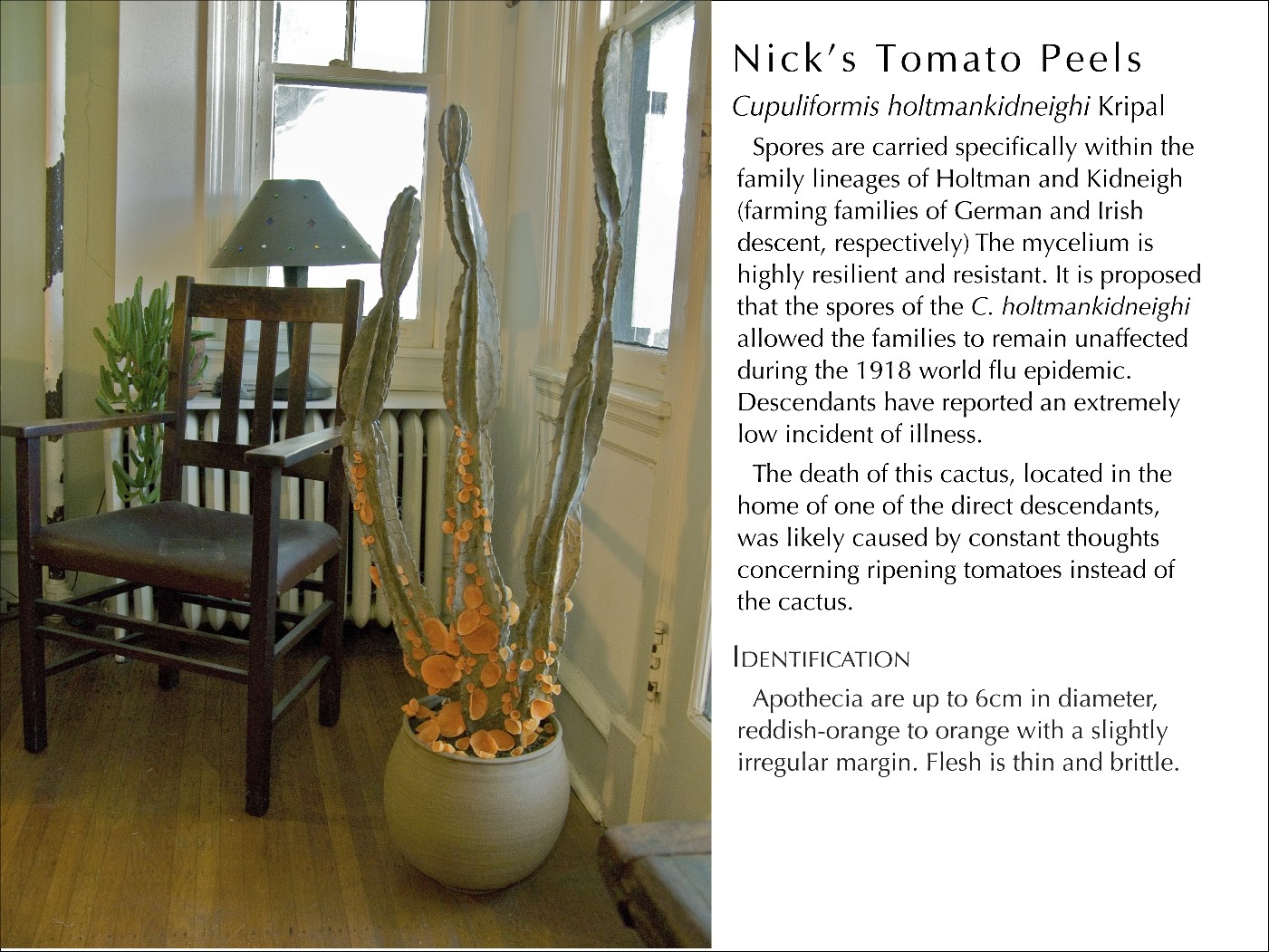
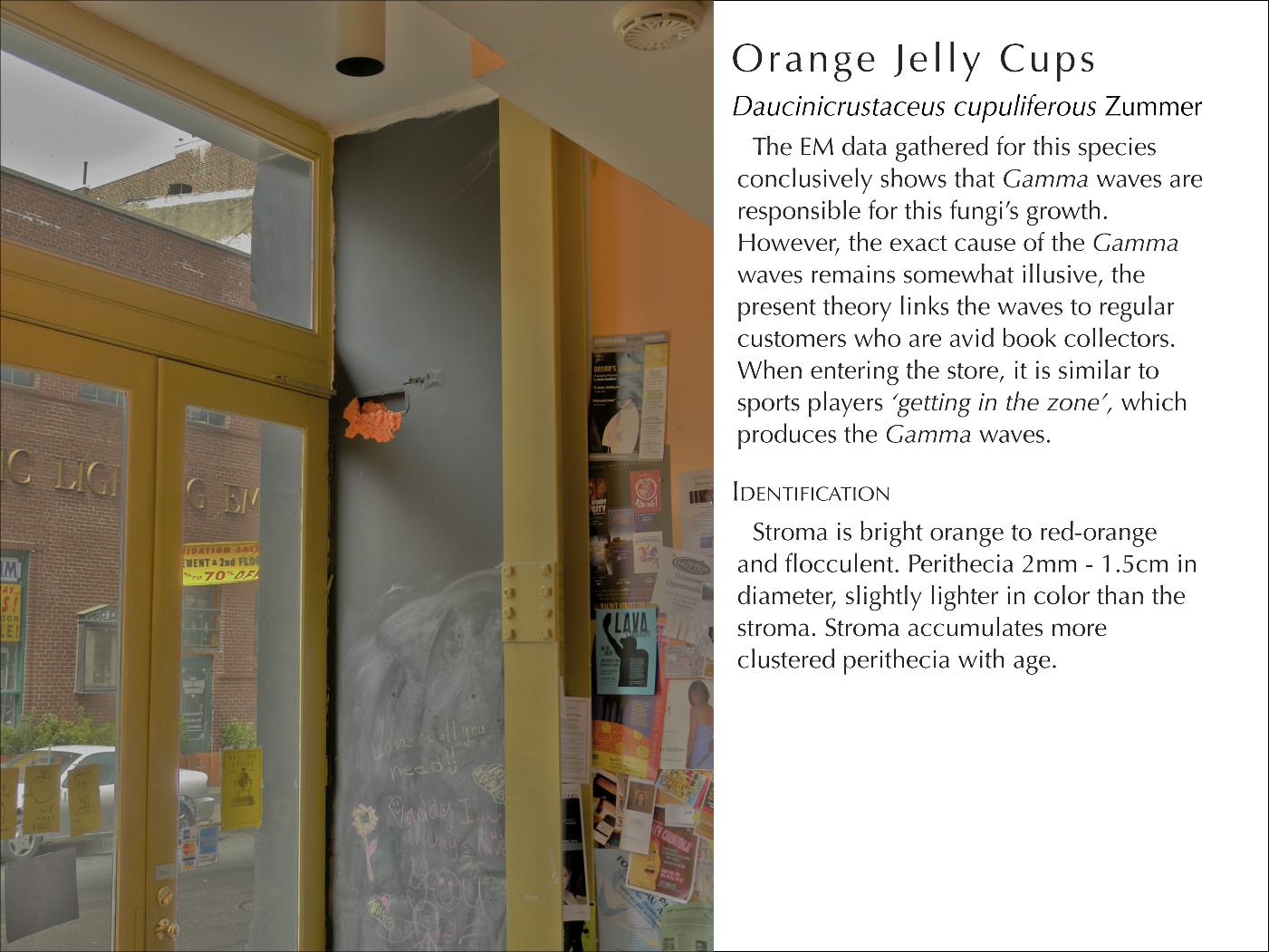

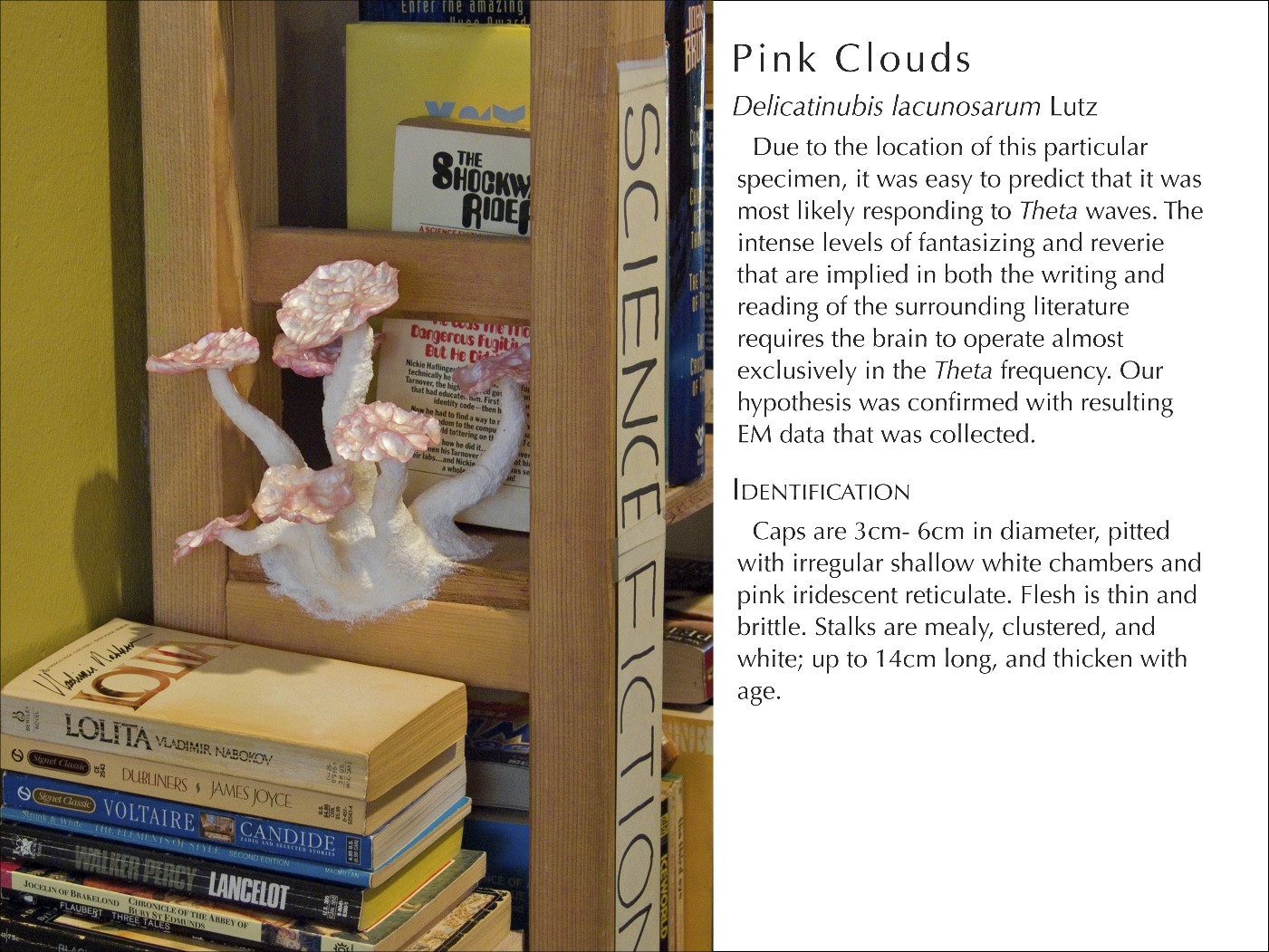

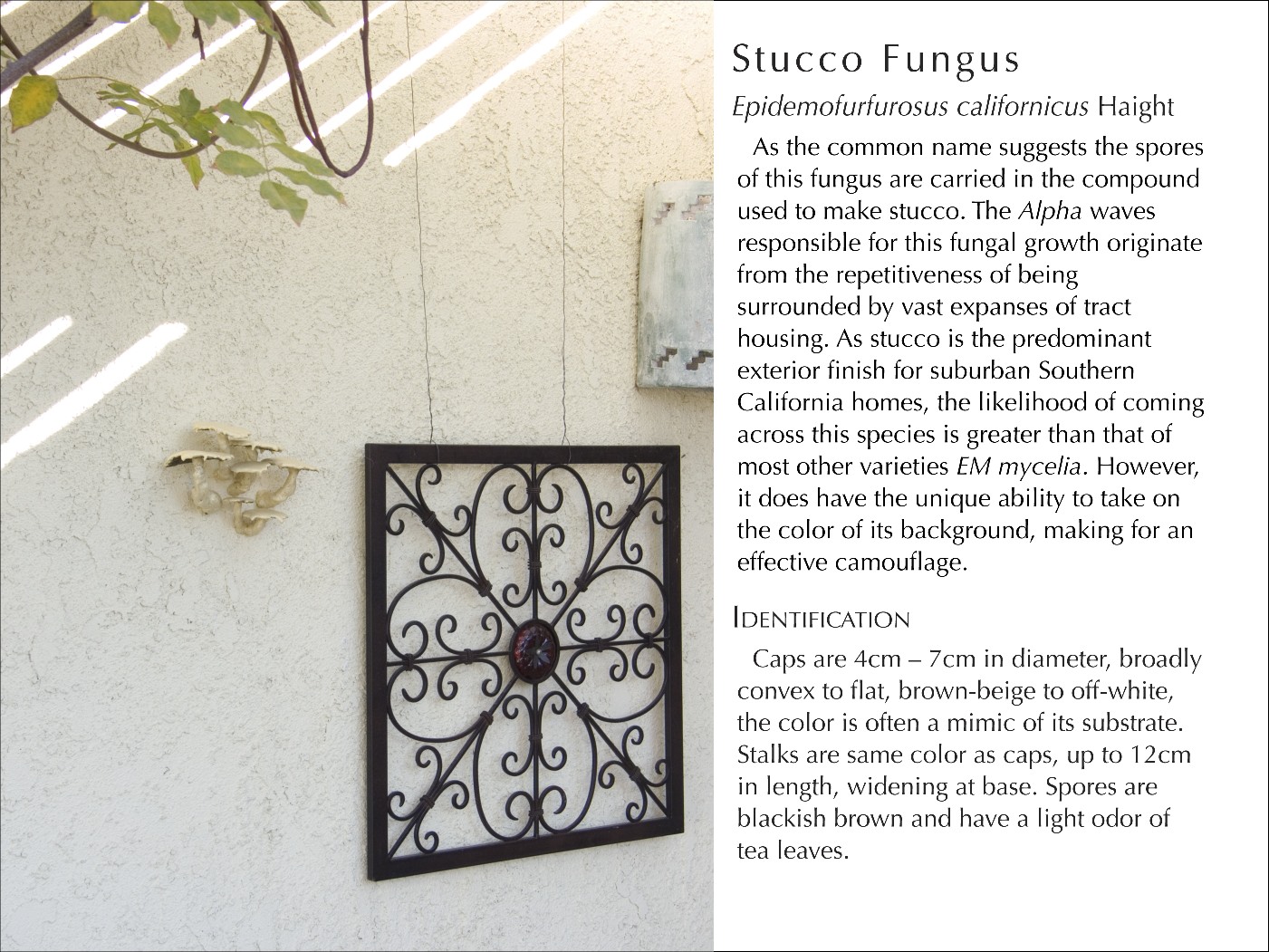

Introduction
This field guide documents the most recent findings regarding new discoveries of mycelia, which absorb energy to produce nutrients from ultra low frequencies (ULF) of electromagnetic waves rather than from organic material. Three key elements must be present and interacting for such a synthesis to occur. The synthesis requires electromagnetic waves emitted by the human brain to align with the Earth’s prevalent electromagnetic resonance (known as SR frequencies) and be within close vicinity to the electromagnetically sensitive mycelia. Although somewhat premature in its theories, this field guide is ground breaking in its documentation of this new taxon of electromagnetic (EM) mycelia. Three brief introductory essays will provide you with the fundamental information to understand the EM mycelia. The first essay The Great Unknown provides information on the Kingdom of EUMYCOTA and EM mycelia’s current phylogenetic relationship with in this Kingdom, along with some molecular anomalies present in the species. The second essay Electromagnetic Waves and Their Relevance gives a brief overview the electromagnetic frequencies, which affect the EM mycelia. Finally The Theory of the Electromagnetic Mycelia explains how the EM mycelia use electromagnetic frequencies as a source of nutrients. This guide illustrates 15 newly documented species of EM mycelia that will further explain the EM mycelia’s use of electromagnetic waves, and provides a glossary to help familiarize the reader with some of the newer terms.
The Great Unknown
The Kingdom of EUMYCOTA (also known as FUNGI) is currently estimated to have 1.5 million species, which in two centuries of mycology only 6-7% have been described (Hawksworth, 1991; Hawksworth et al., 1995). Due to advances of molecular biology in recent decades, the phylogenetic mapping of Fungi is constantly in flux. As early as 1991 molecular evidence has suggested that Fungi are more closely related to animals than to either Plants or Protists (Bruns et al., 1991). Furthermore, there are no less than seven kingdoms currently recognized within the taxonomic structure. This is a huge change from the two-kingdom system of Plants and Animals, in which fungi was placed under plants. As of the writing of this text the EM mycelia are placed in the informal division of the Deuteromycota (fungi imperfecti), which presents similar taxonomic issues as the other informal division of the lichens (ie. they are polyphyletic). Part of the issue in the classification of the EM mycelia is a genetic variant that renders the mycelia (the vegetative growth that forms the majority of a fungus) virtually invisible.
Fossil evidence for EM mycelia has been both controversial and contentious, with two major schools of thought counterpoised in regards interpretation of the data. Sedimentary impressions dating to the Ordovician are well known. There is enough material to have initially classed these organisms with slime molds and related primitive biota. The controversy arises in the interpretation of the paleozoological data. It is well-known that perfectly preserved specimens of soft-bodied creatures are extremely rare, and that certain inevitable distortions in the fossilizing process make clear determinations extremely difficult. In the case of what all must now concede is early EM mycelia, the difficulty is compounded. Not only has the original biological material been replaced by mineral precipates during the fossilization process, but certain properties that can only have been verified with actual tissue samples, are extremely unlikely to be accomplished. A number of recent advances in the field of molecular biology have lead to the development of a speculative model that describes certain physical properties, and some rather unusual effects, of these missing structures, through the use of naturally occurring nanotubes.
While it has been presumed that carbon nanotubes are singularly artifactual - i.e. that they are highly technological man-made artifacts, there is a plausible possibility that they are also naturally occurring structures. One might query how is this possible. There may be contemporary ‘living fossils’ –indeed, quite possibly a large range—of EM mycelia, thriving right under our noses. Paleontology is, after all, a well-established discipline with an impressive pedigree. It’s conceptual infrastructure, as well as its established methodologies (from comparative anatomy to elementary particle physics) and technologies are above reproach. What can we have missed? It is precisely this: The shape, pattern, and molecular scale of the impressions left by what we have presumed to be primarily soft-bodied representative specimens of EM mycelia indicate that certain structures (which have thus far remained unidentified) create an exterior covering over the hyphae of the mycelia that may have had a surprising function. On close inspection these traces appear remarkably similar, and of the same scale, as certain carbon nanotube structures recently produced under laboratory conditions. Because of the variability of the micro scales and patterns of these structures, one of the remarkable aspects of nanotubes that are currently being studied is that they absorb and reflect precise wavelengths of visible light. Of course, all objects absorb and reflect light---that is how we see them!
So why have we not seen more EM mycelia? Supported by growing evidence, it is proposed that the nanotube-like sheath covering the hyphae (EM paleo-zumeriae) acts as a projective lens that reveals the background of the mycelia to the viewer, thus effectively rendering these life forms invisible under ordinary conditions. In fact, it is only under certain extraordinary conditions—the extreme statistical unlikelihood of fossilization—that this data ‘comes to light’ at all. It should be mentioned at this point, that although the mycelium of the fungi is virtually invisible the resulting fruiting bodies are not. If not for the fruiting bodies of these fungi an entire world of invisible biota would most likely go completely unnoticed.
Electromagnetic Waves and Their Relevance
The study of electromagnetic waves is significantly younger than that of mycology, starting in 1861 with James Clerk Maxwell’s equation, which predicted electromagnetic waves of much lower frequency than visible light. Heinrich Rudolf Hertz then proved Maxwell’s equation in 1888, and in 1920 the first studies of EM traces from the human brain were conducted by German physiologist Hans Berger, using the electroencephalogram (EEG).
Brain waves are classified from the very slowest delta waves (1-3Hz) seen in very deep sleep, through theta (4-8Hz) where brain activity slows almost to the point of sleep, and is the state within which ideation or reverie occurs, alpha (8-13Hz) is associated with a relaxed state of awareness, and beta (14-30 Hz) indicates that alertness and focus, then to the most rapid firings in the human brain - gamma (30+ Hz) of which there is growing evidence that gamma waves, coupled with other frequencies control perception and consciousness.
Another set of frequencies, which are related to the fungal phenomenon, is the Schumann resonances. The Schumann resonances (SR) are global electromagnetic resonances that can be observed as a set of spectrum peaks in the extremely low frequency (ELF) and ultra low frequency (ULF) bands in the range of 5-50 Hz; specifically 7.8, 14, 20, 26, 33, 39 and 45 Hz, with a daily variation of about +/- 0.5 Hertz. These are quasi-standing electromagnetic waves that exist in the Earth-ionosphere cavity with a wavelength equal to the circumference of the Earth. Because these resonances are excited by lightning discharges, SR is used to track thunderstorms worldwide and less directly it is used to track changes in the global climate. However, our interest in the SR is in the overlap of gamma, beta, alpha, and theta brain waves.
The Theory of Electromagnetic Mycelia
As mentioned in the introduction the EM mycelia require an overlap of three elements in order to synthesize electromagnetic waves into nutrients. The synthesis requires EM waves emitted by the human brain to align with the current Schumann’s resonance within the close vicinity of the EM mycelia. When a person’s brainwaves correspond to the prevalent SR frequency, the Earth’s cavity acts as an amplifier for the person’s brain waves. Due to the fact that the amplitude of brain waves is so low, they are already difficult to detect with out a physical connection to the scalp. Nonetheless, when it is amplified by a SR frequency the brain waves can be detected 2-3 meters away, while still clearly showing an individual’s brain wave patterns. The species of EM mycelia that have been documented lead us to the conclusion that even low level exposure to the appropriate EM frequency, can cause immediate growth producing the fruiting body of the fungi. However, exposure must be maintained, although it can be intermittent, in order for the fungi to sustain its fruiting body. This results in huge variations in growing season and duration of the fruiting bodies of each fungus. Another characteristic of EM fungi is that its habitat includes locations in which people operate within established routines of both thought and movement.
The following 15 species, which are described in this field guide, took place in four separate locations in which unusual occurrences of previously undocumented fungi were reported. Molecular analysis of these specimens reviled similar, but highly abnormal data. Consequently, a team of mycologist volunteered to undertake the arduous task of documenting these elusive specimens.
The team of mycologists consisted of Laura M. Haight (Team Leader), Nicholas Kripal, Jon Clark, Winifred Lutz, Julie York, Richard Hricko, and Thomas Zummer (Metamycostasis / Independent scholar). Photographic credits go to Laura M. Haight.
Special thanks to The Foundation for Extraordinary Earth Sciences (F.E.E.S), without their generous funding and support the EM mycelia project would not have been possible. We are also grateful to friends and colleagues, who contributed their expertise and assistance: Cathy Jo, David Gene, Jean and Richard Penilla, Rachel Chambers, Pazia Mannella, Louise Radochonski, Cavan Drake, Dylan Beck, Emily Snedden, Jerry Kaba, Sharon O’Mara, and Debby Jolly.